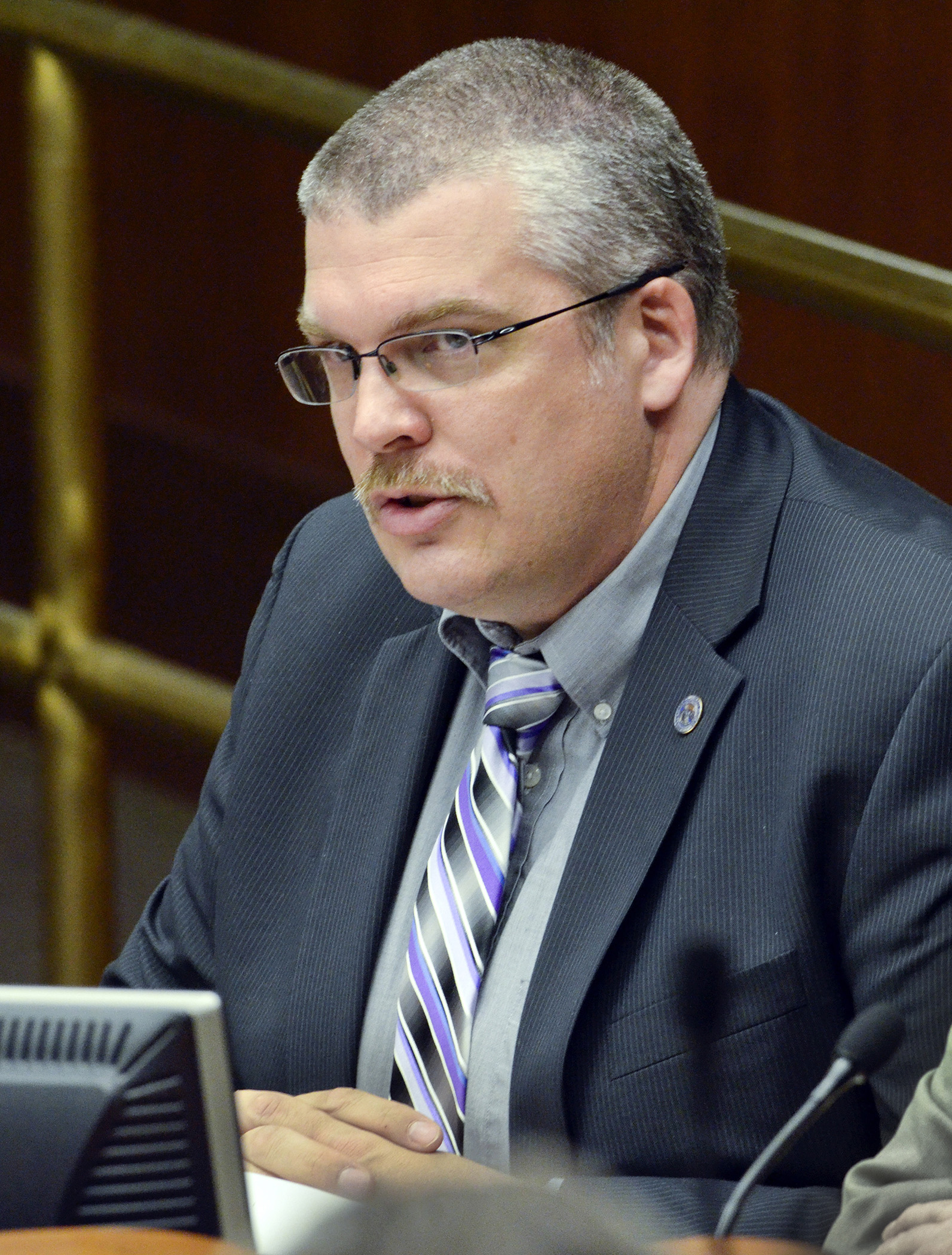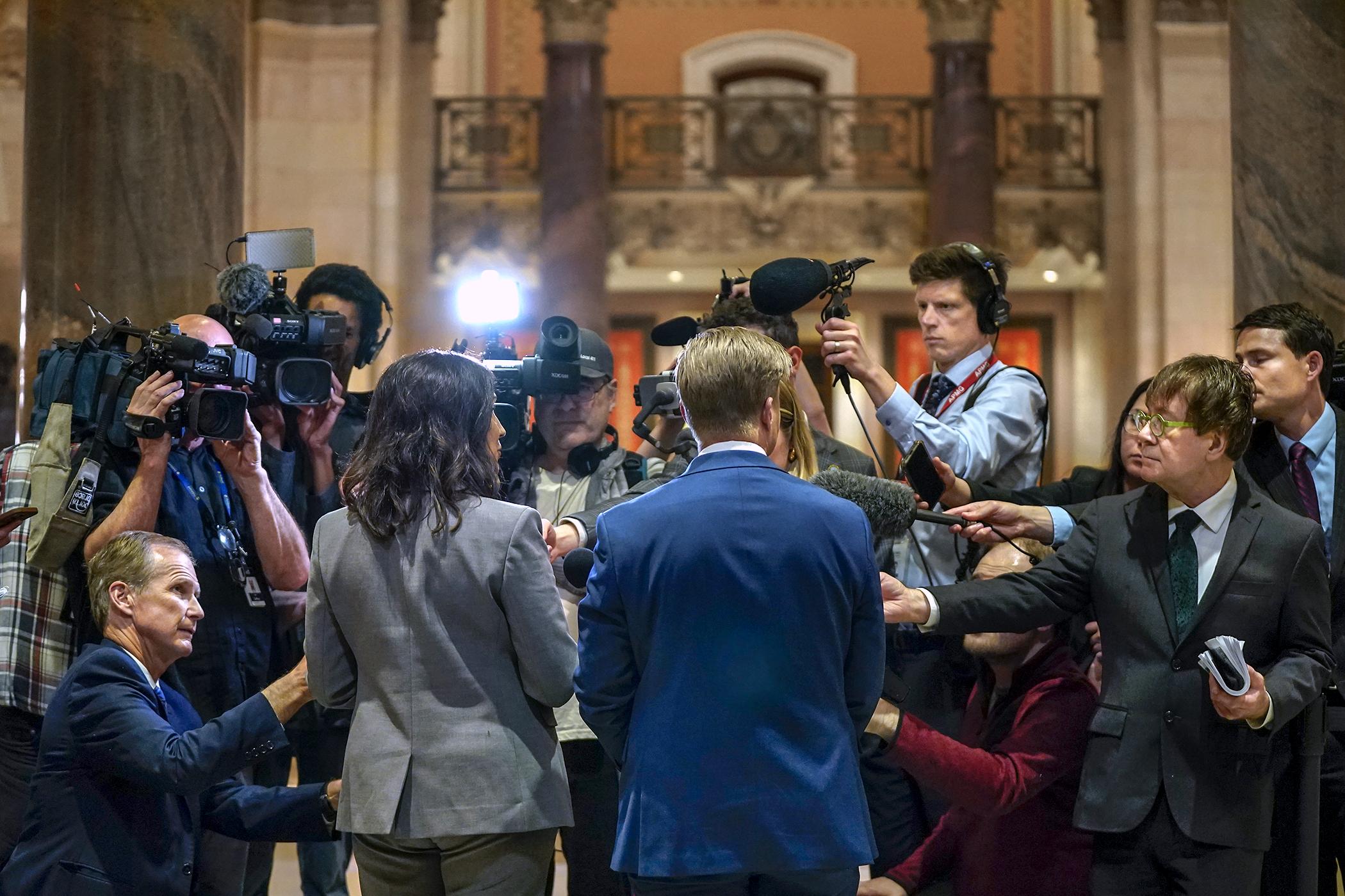Getting connected, staying connected important to state’s future, lawmakers say

When we used to think of the future, we thought of flying cars and hover boards thanks to The Jetsons and the Back to the Future trilogy. Now that we’re just one year away from the Back to the Future future of 2015, it’s time to get real. And the best way to do that is to make sure every citizen in the state is “connected.”
This session, the House has heard several bills on broadband and telecommunications. After a Tuesday night meeting in the House Jobs and Economic Development Finance and Policy Committee, broadband could get an expansion.
“Broadband is the future of Minnesota,” said Rep. Erik Simonson (DFL-Duluth) in one of several hearings on broadband and telecommunications. “Minnesota lags behind in technology. Good broadband is a need and it’s frustrating to people when they don’t have the tools that they need.”
The supplemental omnibus jobs and economic development finance bill, also known as HF2976, sponsored by Rep. Tim Mahoney (DFL-St. Paul), which totals $38.63 million in General Fund spending for fiscal year 2015, contains a one-time appropriation of $25 million for a broadband development grant program and an additional $450,000 for broadband mapping across the state. The grant funds would be available to areas of the state that are unserved, those who don’t have access to the federally provider-required download speed of four megabits per second; or underserved, those who don’t have access to the state’s provider-required download speed of 10 to 20 megabits per second.
Annandale is one community of many that could benefit from a broadband expansion. For them, slow speeds and frequent outages prove difficult for businesses that can’t process credit card transactions, and for medical facilities that can’t access patient records or fill prescriptions when the system goes down. Annandale City Councilwoman Shelly Jonas said an 80-year-old nun approached her to ask what the city was doing about the broadband issues.
“This is a very pervasive issue in our community,” Jonas said. “During an outage, businesses can’t use web-based technology. It effects the quality of life overall.”
With 34 percent of the city’s workforce telecommuting or working virtually, Jonas said there’s a strong argument for better broadband access. “We have a shot at this,” she said. “We could be sitting in this exact situation in five years without a future-thinking provider.”
Deb Reitmeier, Annandale health and community services administrator, said that as of Jan. 1, 2015, health care providers will be mandated to have fully electronic health records in place.
“We don’t have the speeds to achieve that,” she said. “These laws have been made and we don’t have the tools to comply with the laws. It’s unacceptable to our residents and to Minnesota. Our residents should have to wait for their medications.”
The bill now moves to the House Ways and Means Committee. The companion, SF2633, sponsored by Sen. Terri Bonoff (DFL-Minnetonka), awaits action by the Senate Finance Committee.
Other provisions in the bill include:
- $7 million for grants to the Southwest, West Central, Southern Minnesota, Northwest Minnesota, and Central Minnesota Initiative Foundations, the Northland Foundation and Urban Challenge Program. Each would receive $1 million;
- $1.625 million for workforce development that would include a women and nontraditional jobs grant program, IT apprenticeship pilot program, precision manufacturing and HC services apprenticeship pilot program, Department of Employment and Economic Development accountability requirements, and a new employee training partnership;
- $1.6 million for the Minnesota Jobs Skills Partnership program;
- $500,000 for Women Entrepreneurs Business Development grants, which is a part of the Women’s Economic Security Act;
- $450,000 to establish the Regenerative Medicine Research Institute, which would be used for further investment in regenerative medicine that would look further into diseases like diabetes, Parkinson’s and Alzheimer’s; and
- $250,000 for the Department of Labor and Industry for women and nontraditional jobs apprenticeships.
Related Articles
Search Session Daily
Advanced Search OptionsPriority Dailies
Legislature — with budget incomplete — gavels out, prepares for special session
By Rob Hubbard Some years, state legislative sessions surge to a climax on their final day, a flurry of activity providing a sustained adrenaline rush, culminating in smiles of satisfaction as...
Some years, state legislative sessions surge to a climax on their final day, a flurry of activity providing a sustained adrenaline rush, culminating in smiles of satisfaction as...
Walz, lawmakers strike budget deal in session's final days
By Lisa Kaczke With five days to go in the 2025 session, three of four legislative leaders announced a budget agreement Thursday that would sunset unemployment insurance for hourly school empl...
With five days to go in the 2025 session, three of four legislative leaders announced a budget agreement Thursday that would sunset unemployment insurance for hourly school empl...